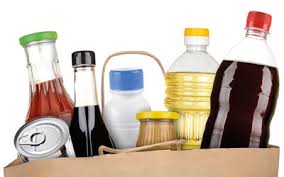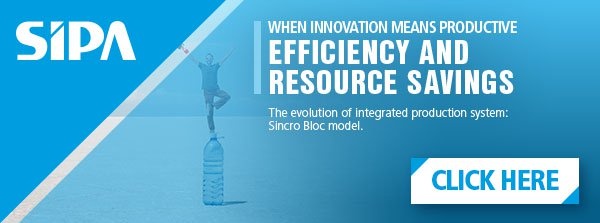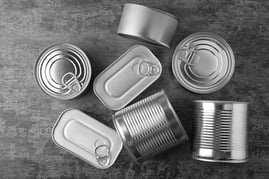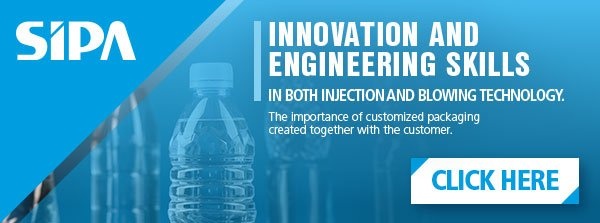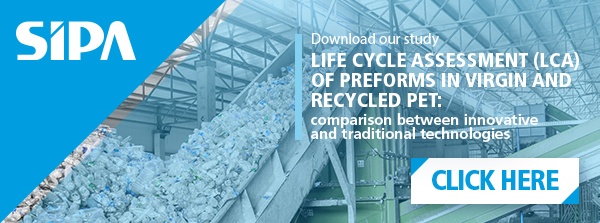In recent years, the design of PET beverage bottles has been refined.
Among other aspects, the weight of each bottle has been reduced, thus reducing the amount of material needed and making the bottle more environmentally friendly.
What are the main features of PET bottles for edible oil and what are the benefits compared to other materials (particularly HDPE, glass, tin and cardboard)?
We summarize them in points:
- PET presents a quality appearance, transparent and shining, similar to glass but unbreakable;
- Its transparency allows to show the product to consumers;
- On shelves it allows an occupied space optimisation and an effective exposure;
- Great flexibility of bottle design;
- Suitable characteristics to increase impulse buying;
- It is the preferred material by companies marketing departments for bringing new products to market;
- As for edible oil, the market runs in rigid and transparent forms direction;
- This is a 100% recyclable material;
- Has a very wide range of sizes, from 100 ml to 20 litres and beyond; in this case can also be stackable;
- With ultra competitive costs. Compared to glass, you can save up to 30% on shipping costs with PET
- Good barrier: PET products allow for low permeability of water, carbon dioxide, and oxygen. These characteristics help protect and maintain the integrity of each product.
The industry has been scrambling to react to public anger over scenes of huge piles of plastic waste contaminating oceans, pledging to step up recycling efforts.
PET lightness
The extreme PET lightness makes this material more competitive compared to other materials used for Pet bottle production systems for edible oil.
Polyethylene terephthalate overcomes the challenges with other materials offering the following ratio between packaging size and average weight:
Size, ml Weight, g
200 10-12
500 15-18
1000 22-28
2000 42-60
5000 85-115
READ ALSO: "KEY CHARACTERISTICS OF EDIBLE OIL BOTTLE PACKAGING"
Comparing PET packaging with other materials
Plastic is versatile. It comes in many varieties like polyethylene terephthalate (PET), high density polyethylene (HDPE), low density polyethylene (LDPE), polypropylene (PP) and more.
Each of these materials has its own chemical compatibility properties, temperature rating, impact resistance, etc. With so many options, it’s likely you can find a plastic container suited for your product and use.
We believe it is useful to make some comparisons with other materials commonly used by packaging line.
READ ALSO: "EDIBLE OIL BOTTLE PACKAGING: FROM TIN TO PET PRODUCTS"
PET vs polylaminate cardboard
As an example, the polylaminate cardboard (75% paper, 5% aluminium, 20% polyethylene) with regards to packages of 200 ml, has a weight of approximately 9 g, for those from 1000 ml of oil, gets to 30 g.
PET bottles, unlike carton packages, they have a transparency advantage as well as providing greater mechanical strength.
The weaknesses of the edible oil packaging cartons, relate to:
- Limited size packaging options
- Total lack of product visibility
- High raw material costs
- No shape flexibility
- Higher complexity as far as packaging recyclability is concerned
PET vs HDPE
PET (polyethylene terephthalate) and HDPE (high density polyethylene) are the two most popular choices in the food, drink, beauty and chemical industries
What are the main differences between them?
Opacity
The most obvious difference between PET plastic and HDPE plastic is the opacity. PET is typically transparent,.
HDPE is translucent, which means that it looks opaque from a distance but it also allows you to see the fill level of your product through the material at a close distance.
Barriers
PET is strong, yet lightweight and flexible; with it greatly resembling glass in appearance. It acts as a strong barrier against water vapour, gas, oil, alcohol and dilute acids, making it the perfect packaging option where preventing product contamination is essential.
On the other hand, HDPE is tough and rigid, with a finish of a natural milky colour. The strength of the material means that it is very difficult to crack the plastic and makes it an appropriate packaging choice for chemicals and industrial cleaning products!
Recyclability
In terms of recycling, there isn’t a huge difference between the two plastics. Both PET and HDPE are collected by around 92% of local councils; so make sure that you make this clear on your product labelling to ensure that your packaging is being disposed of responsibly.
PET plastic can be recycled into a variety of new materials, including fabrics and new food packaging, whilst HDPE can be turned into garden furniture, bins and pipes!
High density polyethylene (HDPE) is a material mostly used for medium and large edible oil bottles.
Compared to PET, high-density polyethylene means a greater weight.
A pack of 5 litres of high density polyethylene (HDPE) weighs 200 g against the 85-115 g of PET. Beyond the weight, high-density polyethylene has a cost greater than PET equal to 15-20%.
PET vs glass and tin
Aluminum tins might indeed mean less ocean waste, but they come with their own eco-price: the production of each can pumps about twice as much carbon into the atmosphere as each plastic bottle.
Tinplate and glass have similar problems: first, high raw materials costs, but there are also questions relating to the factors of packaging possible damages during palletizing and transportation. Weight is also higher than PET.
The following is an symbolic weight comparison for 15 litres oil containers:
Tin: 930g,
HDPE: 630g,
PET : 300 g
At aluminum’s most polluting level, a 330 ml can is responsible for 1,300 grams of carbon dioxide emissions, according to the analysis compiled for Reuters, roughly equating to the emissions produced by driving a car 7 to 8 km.
A plastic bottle of the same size, made from the polyethylene terephthalate (PET) plastic typically used, accounts for up to 330 grams.
The process it takes to create a plastic bottle is far less intense also than that which goes into the production of its glass counterpart, meaning that plastic has a far smaller carbon footprint than glass. Carbon, along with the methane emissions from agriculture and dairy farming, is one of the biggest contributors to global warming.
Simple economics is a major factor; aluminum is more expensive than plastic - the raw material cost for a can is about 25-30% higher than a PET bottle of a similar volume.
A broad shift to aluminum cans would raise costs for companies, also including new manufacturing infrastructure, thus hitting products’ competitiveness against plastic rivals.
Another key factor is consumer convenience.
While advances are being made in can technology, most cans are opened and stay open, while bottles can be recapped.
Plastic bottles can also be sold in a range of sizes, while cans and glass are more limited.
Even if some companies are beginning to think about use of cans, to assuage pollution concerns, they are also embarking on a green makeover for plastic. Scientific efforts include creating new compounds that are biodegradable or more easily recyclable.
Danone, which uses 400,000 tonnes of PET plastic bottles each year, is focusing on increasing recycling of plastic and plans to use an average of 50% recycled material in its water bottles by 2025 and 100% for its Evian brand.
And Pepsi is introducing a plastic bottle made of 100% recycled material for another brand, LIFEWTR.
